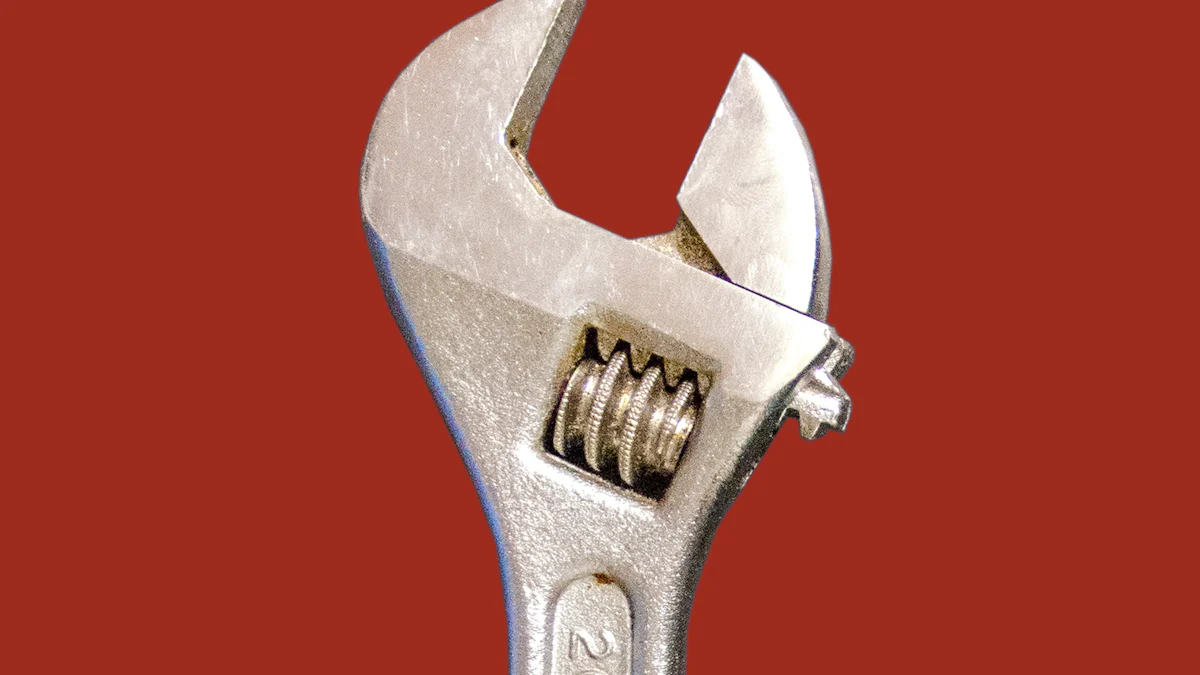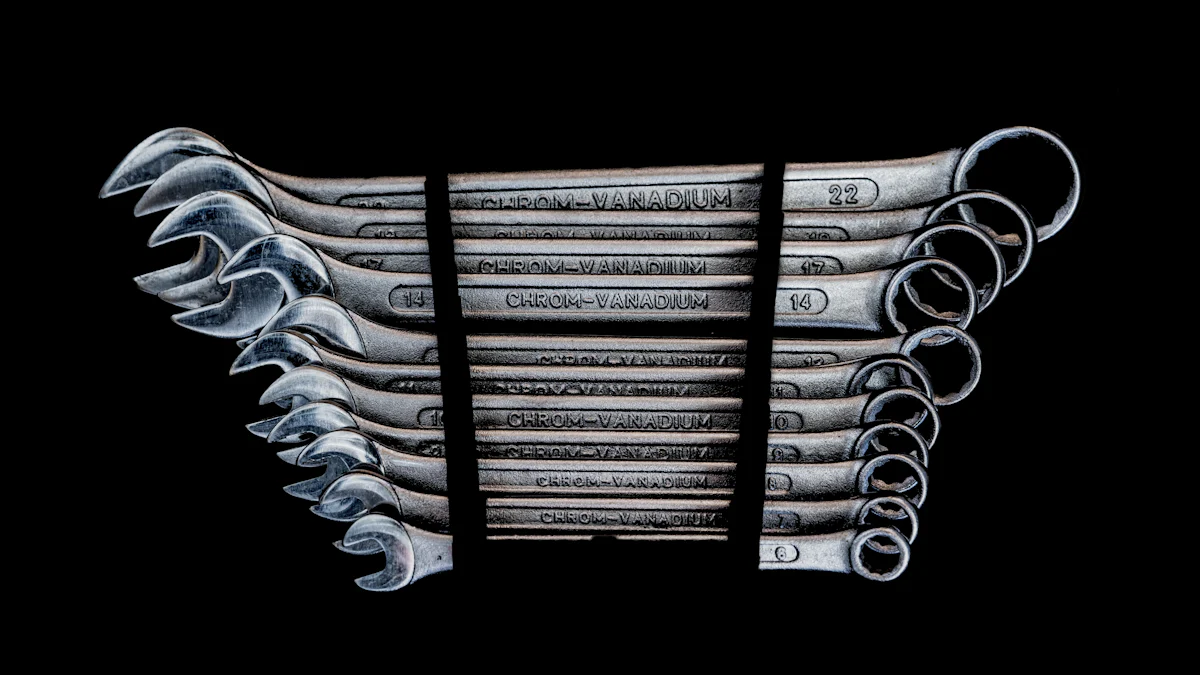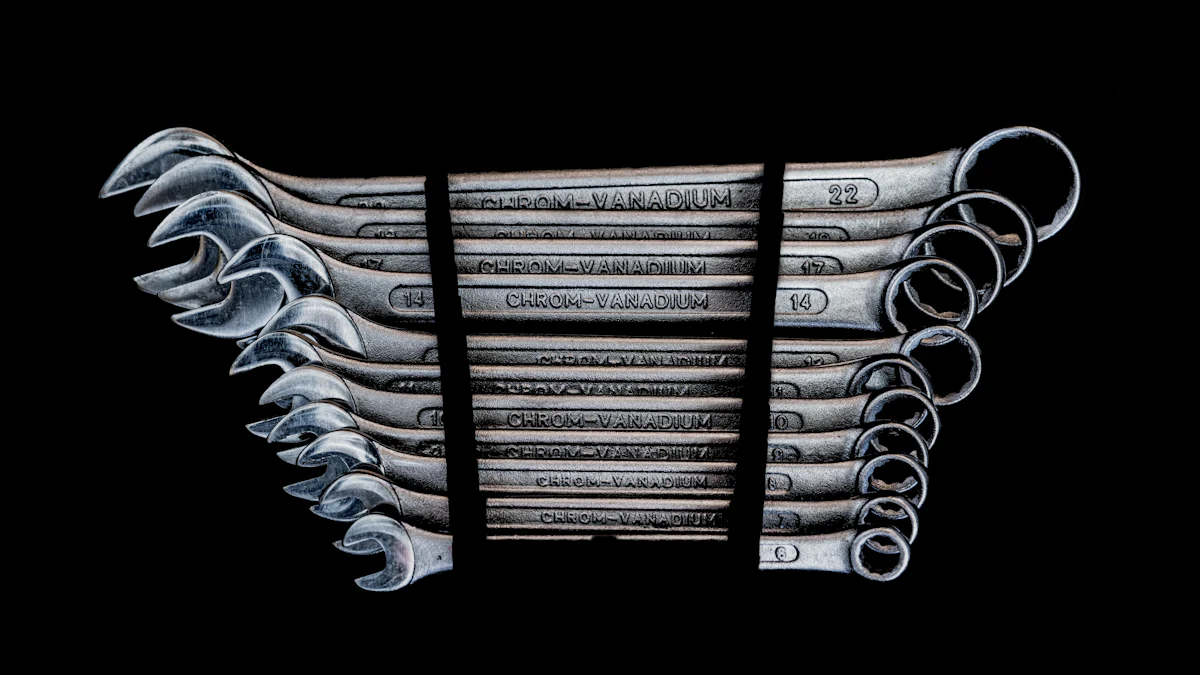
What’s a spanner? A spanner, also known as a wrench, is a hand-held tool used to provide grip and apply torque to turn objects such as nuts and bolts. The term “spanner” originated in the 18th century during the Industrial Revolution, which changed the way wrenches were made and increased production. Spanners play a crucial role in various industries, including automotive repair, plumbing, and construction. These tools ensure the proper assembly and maintenance of machinery and equipment, making them indispensable for both professionals and DIY enthusiasts.
What’s a Spanner?
Definition and Key Takeaways
Basic Definition
A spanner, also known as a wrench in American English, is a hand tool designed for turning nuts, bolts, and other fasteners. The primary function of a spanner is to provide a secure grip and mechanical advantage to apply torque for tightening or loosening fasteners. The design typically features a handle with one or both ends shaped to fit the profile of a specific type of fastener.
Key Characteristics
Spanners come in various shapes and sizes to accommodate different types of fasteners. Common characteristics include:
- Material: High-quality steel or alloy for durability and resilience.
- Design: Pins or hooks that fit into the holes or notches of the object being turned.
- Ergonomics: Comfortable grip to reduce fatigue during prolonged use.
- Functionality: Ability to apply greater force with minimal effort.
Historical Context
Origin of the Term
The term “spanner” originated in the 18th century during the Industrial Revolution. This period marked significant advancements in manufacturing processes, leading to the development of more efficient tools. The word “spanner” comes from the Old English word “spannan,” meaning to join or fasten.
Evolution Over Time
Spanners have evolved significantly since their inception. Early designs were simple and often custom-made for specific tasks. Over time, manufacturers standardized spanner designs to improve efficiency and versatility. Modern spanners now feature advanced materials and ergonomic designs, making them indispensable tools in various industries such as automotive repair, plumbing, and construction.
Types of Spanners

Open-End Spanner
Description and Features
An open-end spanner features two U-shaped jaws at each end. The jaws fit around the sides of a fastener, providing a firm grip. This design allows for easy access to nuts and bolts in tight spaces. The open-end spanner is typically made from high-quality steel or alloy, ensuring durability and strength.
Common Uses
The open-end spanner is commonly used in automotive repairs. Mechanics often use it to tighten or loosen nuts and bolts on car engines and other components. Plumbers also find it useful for working on pipes and fittings. The open-end spanner’s versatility makes it a staple in many toolboxes.
Box-End Spanner
Description and Features
A box-end spanner has a closed loop at each end. The loops fit snugly around the entire head of a fastener, providing a secure grip. This design minimizes the risk of slipping and rounding off the fastener’s edges. Box-end spanners are usually made from strong materials like chrome vanadium steel.
Common Uses
Box-end spanners are ideal for tasks requiring high torque. They are frequently used in industrial applications, such as assembling machinery and equipment. The secure grip of the box-end spanner makes it perfect for working with stubborn or rusted fasteners.
Combination Spanner
Description and Features
A combination spanner combines the features of both open-end and box-end spanners. One end has an open jaw, while the other end has a closed loop. This dual functionality offers flexibility and convenience. Combination spanners are often constructed from durable materials like alloy steel.
Common Uses
Combination spanners are versatile tools used in various fields. Automotive technicians use them for engine repairs and maintenance. Construction workers find them useful for assembling structures and machinery. The combination spanner’s dual design makes it a practical choice for many tasks.
Adjustable Spanner
Description and Features
An adjustable spanner, also known as a crescent wrench, features a movable jaw. This design allows the user to adjust the tool to fit various sizes of nuts and bolts. The adjustable spanner includes a worm screw mechanism, enabling precise adjustments. Most models have a size scale for imperial or metric measurements, enhancing versatility. High-quality steel or alloy construction ensures durability and strength. The ergonomic handle provides comfort during prolonged use.
Common Uses
The adjustable spanner excels in automotive repairs where different fastener sizes are common. Mechanics use it for tasks involving car engines and other components. Plumbers find it useful for working on pipes and fittings of varying sizes. The adjustable spanner’s flexibility makes it indispensable for household maintenance tasks, such as assembling furniture or repairing appliances. Industrial applications also benefit from its versatility, allowing workers to handle various fasteners without switching tools.
Other Specialized Spanners
Description and Features
Socket spanners feature interchangeable sockets that fit hexagonal fasteners. This design allows for quick changes between socket sizes, making the tool highly efficient. Socket spanners often include a ratcheting mechanism, providing continuous motion without removing the tool from the fastener. Torque wrenches are another specialized type, designed to apply a specific amount of torque to a fastener. These wrenches ensure precise tightening, crucial for tasks requiring exact specifications.
Common Uses
Socket spanners are ideal for automotive repairs, particularly when working with hexagonal nuts and bolts. Mechanics use them for engine maintenance and wheel lug nuts. Torque wrenches find applications in industries requiring precise torque settings, such as aerospace and manufacturing. These tools ensure that fasteners meet exact specifications, preventing over-tightening or under-tightening. Both socket spanners and torque wrenches are essential for professionals who need reliable and accurate tools.
Uses of Spanners

Automotive Repairs
Common Tasks
Mechanics frequently use spanners in automotive repairs. These tools help with tasks such as tightening or loosening nuts and bolts on car engines, wheels, and other components. Spanners also assist in adjusting various parts like brake systems and suspension units. The versatility of spanners makes them indispensable in garages and repair shops.
Tips for Effective Use
- Choose the Right Spanner: Select a spanner that fits the fastener size. This prevents damage to both the tool and the fastener.
- Apply Steady Pressure: Use consistent force to avoid slipping and rounding off the fastener edges.
- Maintain Clean Tools: Keep spanners clean and free from oil or grease. This ensures a firm grip and reduces the risk of accidents.
- Inspect Regularly: Check spanners for wear and tear. Replace any damaged tools to maintain efficiency and safety.
Plumbing
Common Tasks
Plumbers rely on spanners for various tasks. These include tightening or loosening pipe fittings, valves, and nuts. Spanners help in assembling and disassembling plumbing systems, ensuring leak-free connections. Adjustable spanners are particularly useful for working with different sizes of pipes and fittings.
Tips for Effective Use
- Select the Correct Type: Use an adjustable spanner for varying pipe sizes. This provides flexibility and convenience.
- Ensure a Tight Fit: Secure the spanner jaws around the fitting before applying torque. This prevents slipping and potential damage.
- Use Proper Technique: Turn the spanner smoothly and steadily. Avoid sudden jerks to maintain control and prevent accidents.
- Store Properly: Keep spanners in a dry place to prevent rust and corrosion. This prolongs the tool’s lifespan and maintains performance.
Household Maintenance
Common Tasks
Spanners play a vital role in household maintenance. They assist in assembling furniture, repairing appliances, and performing minor home improvements. Adjustable spanners are especially handy for tasks involving various fastener sizes.
Tips for Effective Use
- Match the Spanner to the Task: Use the appropriate spanner type for each job. This ensures efficiency and prevents damage.
- Follow Safety Guidelines: Wear protective gear such as gloves and safety glasses. This minimizes the risk of injury.
- Keep Tools Organized: Store spanners in a toolbox or on a pegboard. This makes them easy to find and keeps the workspace tidy.
- Regular Maintenance: Clean and lubricate spanners regularly. This ensures smooth operation and extends the tool’s life.
Industrial Applications
Common Tasks
Industrial settings often require spanners for assembling and maintaining machinery. Workers use spanners to tighten or loosen bolts on heavy equipment. Spanners assist in adjusting components on production lines. These tools ensure that machinery operates efficiently and safely. Adjustable spanners are particularly useful due to their versatility. Workers can use a single tool for various fastener sizes. This reduces the need to carry multiple spanners.
Tips for Effective Use
- Choose the Correct Spanner: Select an adjustable spanner for tasks involving different fastener sizes. This provides flexibility and convenience.
- Secure the Grip: Ensure the spanner jaws fit tightly around the fastener. This prevents slipping and potential damage.
- Apply Steady Pressure: Use consistent force to avoid rounding off the fastener edges. This maintains the integrity of both the tool and the fastener.
- Regular Maintenance: Clean and lubricate spanners regularly. This ensures smooth operation and extends the tool’s life.
- Inspect for Wear: Check spanners for signs of wear and tear. Replace any damaged tools to maintain efficiency and safety.
Adjustable spanners are essential in industrial applications. Their ability to fit various fastener sizes makes them invaluable. Proper use and maintenance ensure these tools remain effective and reliable.
Choosing the Right Spanner
Factors to Consider
Size and Fit
Selecting the correct size and fit for a spanner is crucial. A spanner must match the fastener to provide an effective grip. Incorrect sizes can damage both the tool and the fastener. Measuring the fastener before choosing a spanner ensures the right fit. This practice prevents slippage and enhances efficiency.
Material and Durability
The material of a spanner affects its durability and performance. High-quality steel or alloy spanners offer strength and longevity. These materials resist wear and tear, making them suitable for heavy-duty tasks. Chrome vanadium steel is a popular choice due to its toughness. Investing in durable materials ensures the spanner remains reliable over time.
Tips for Maintenance
Cleaning and Storage
Proper cleaning and storage extend the life of a spanner. After each use, clean the spanner to remove dirt and grease. Use a cloth and mild detergent for cleaning. Dry the spanner thoroughly to prevent rust. Store spanners in a dry place, such as a toolbox or pegboard. Organized storage keeps tools accessible and in good condition.
Regular Inspection
Regular inspection of spanners ensures they remain in optimal condition. Check for signs of wear, such as cracks or deformations. Replace damaged spanners to maintain safety and efficiency. Lubricate moving parts of adjustable spanners to ensure smooth operation. Routine inspections and maintenance keep tools reliable and ready for use.
FAQ
Common Questions
How to identify the right spanner size?
To identify the correct spanner size, measure the fastener. Use a caliper or a ruler to determine the diameter of the nut or bolt. Match this measurement with the spanner size. Most spanners have markings indicating their size in either metric or imperial units. Always ensure the spanner fits snugly around the fastener to prevent slipping and damage.
What to do if a spanner slips?
If a spanner slips, stop applying force immediately. Check the spanner and the fastener for wear or damage. Ensure the spanner size matches the fastener. Clean any oil or grease from both the tool and the fastener. Reposition the spanner and apply steady pressure. If the problem persists, consider using a different type of spanner, such as a box-end or socket spanner, for a more secure grip.
Practical Advice
Safety Tips
- Wear Protective Gear: Always wear gloves and safety glasses when using spanners. This protects against injuries from slipping tools or flying debris.
- Use the Right Tool: Select the appropriate spanner for the task. Using the wrong tool can cause damage and increase the risk of injury.
- Apply Steady Pressure: Avoid sudden movements. Apply consistent force to prevent slipping and maintain control.
- Inspect Tools Regularly: Check spanners for signs of wear and tear. Replace damaged tools to ensure safety and efficiency.
Best Practices
- Keep Tools Clean: Regularly clean spanners to remove dirt and grease. This ensures a firm grip and prolongs the tool’s lifespan.
- Store Properly: Organize spanners in a toolbox or on a pegboard. Proper storage prevents rust and makes tools easy to find.
- Lubricate Moving Parts: For adjustable spanners, lubricate the worm screw mechanism. This ensures smooth operation and precise adjustments.
- Measure Fasteners: Always measure fasteners before selecting a spanner. This practice ensures the right fit and prevents damage.
Spanners play a vital role in various industries, including automotive repair, plumbing, and construction. Proper use and maintenance of these tools ensure efficiency and safety in every task.
Spanners, also known as wrenches, serve as indispensable tools in various fields. Understanding the different types and their specific uses ensures efficient and safe operations. Selecting the right spanner for each task prevents damage to both tools and fasteners. High-quality materials like steel or alloy enhance durability and performance. Regular maintenance, including cleaning and inspection, extends the lifespan of spanners. Proper tool care and selection contribute significantly to successful outcomes in automotive repairs, plumbing, household maintenance, and industrial applications.
